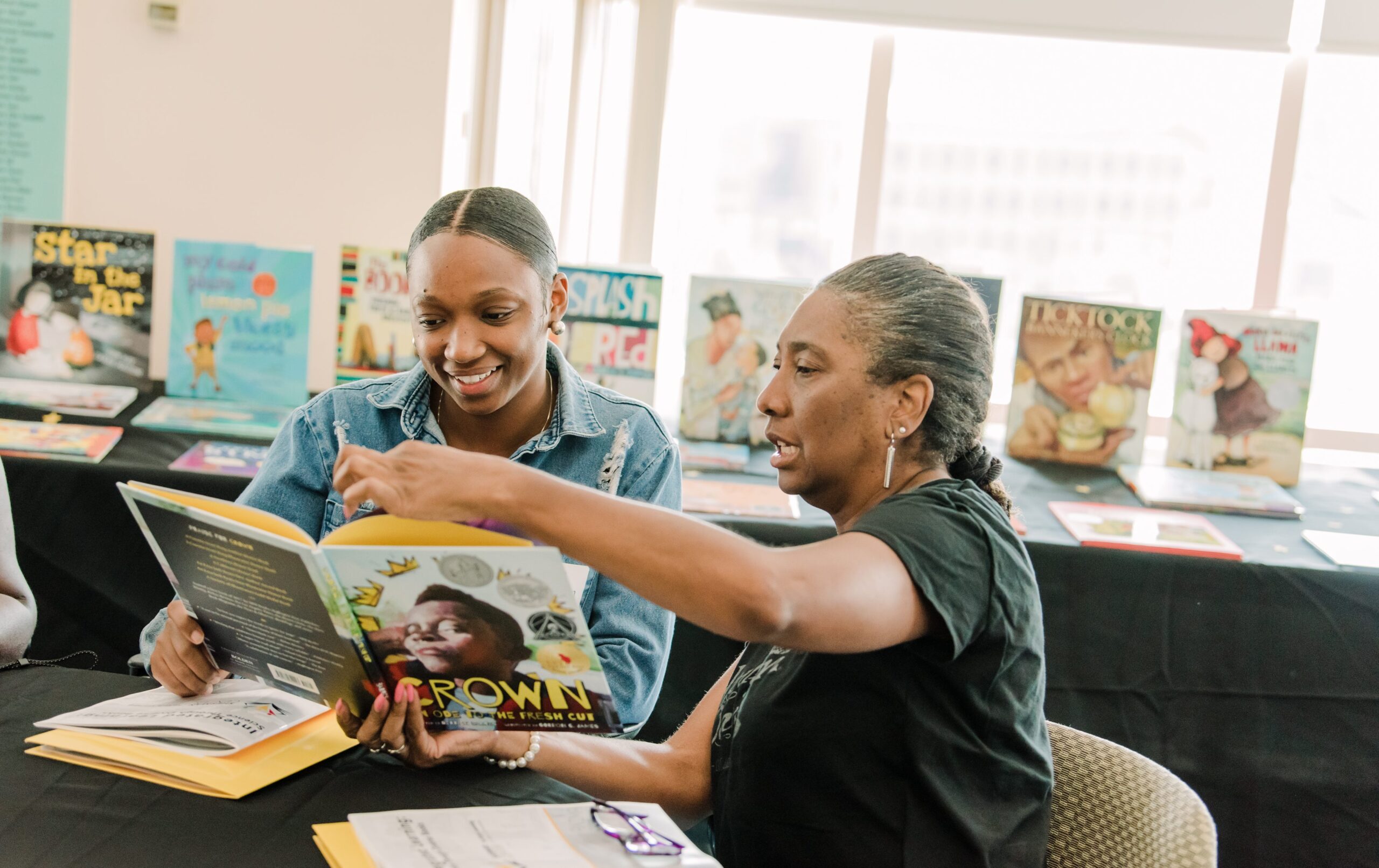UMBC’s Sherman Center for Early Learning in Urban Communities recently welcomed to campus early childhood educators from four Baltimore City public schools. They gathered for a Summer Teacher Institute focuses on improving literacy and outcomes for pre-K-2 students, particularly young English language learners.
Participants represented four of UMBC’s partner elementary/middle schools: Lakeland, Maree G. Farring, Curtis Bay, and Bay-Brook. These schools have strong connections with UMBC, including providing placements for UMBC student teachers and welcoming volunteer tutors. The institute addresses topics identified by the teachers as essential focus areas, explored through a series of interactive, research-based workshops.
Our language toolbox
Jennifer Mata-McMahon, associate professor of early childhood education, led the main two-day workshop. She shared with the teachers her research on translanguaging and early literacy strategies for diverse learners. Translanguaging, the use of a person’s unique linguistic repertoire shaped by their cultural and social context, can be a powerful instructional tool.
Mata-McMahon offered teachers a deep dive into how to use students’ formal, informal, home, school, and playground languages to access curriculum content. Her presentation responded to a crucial need teachers are experiencing: effective strategies to support the increasing number of English language learners in their schools.
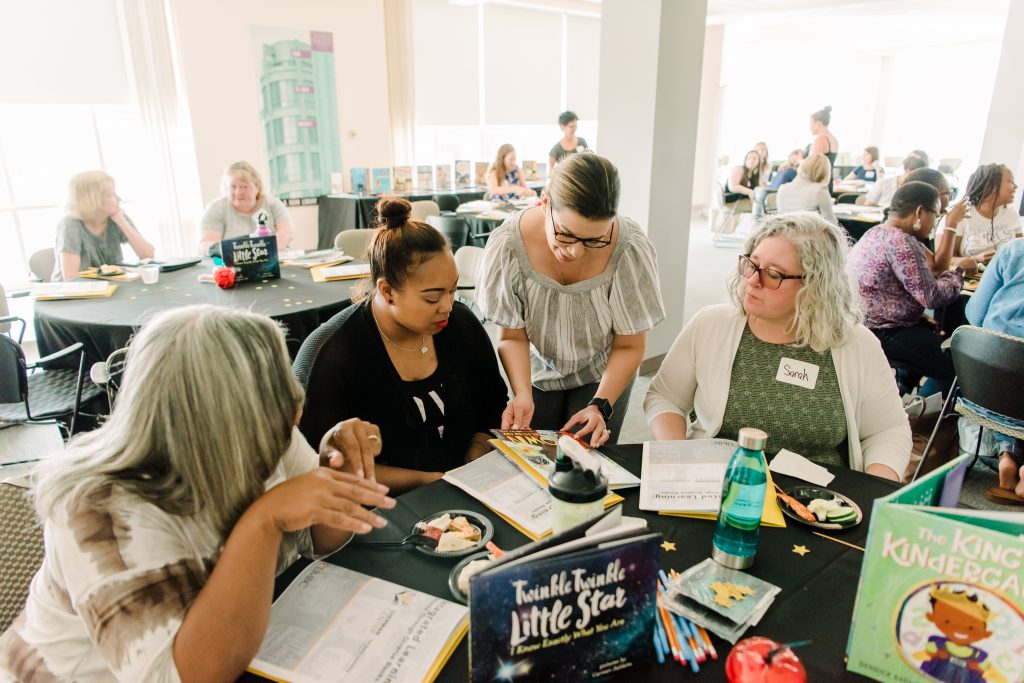
Quiana Zamarron, a first grade teacher at Curtis Bay Elementary/Middle School, experienced the benefits of having additional resources to support English language learners last year. UMBC literacy volunteer, Maia Parker ’22, English, a Sherman STEM Teacher Scholar, worked with students in Zammarron’s class as part of the Sherman Center/Shriver Center Literacy Fellows Program.
“Many of my students are English language learners. Maia, who was learning Spanish at UMBC, was not only able to work with small groups but also to provide support to my Spanish non-English speaking students,” explains Zamarron. “What she gave my class was something I wasn’t able to offer.”
She notes that continuing to learn about literacy strategies for English language learners will make her more confident in her classroom, and help her meet the needs of her students.
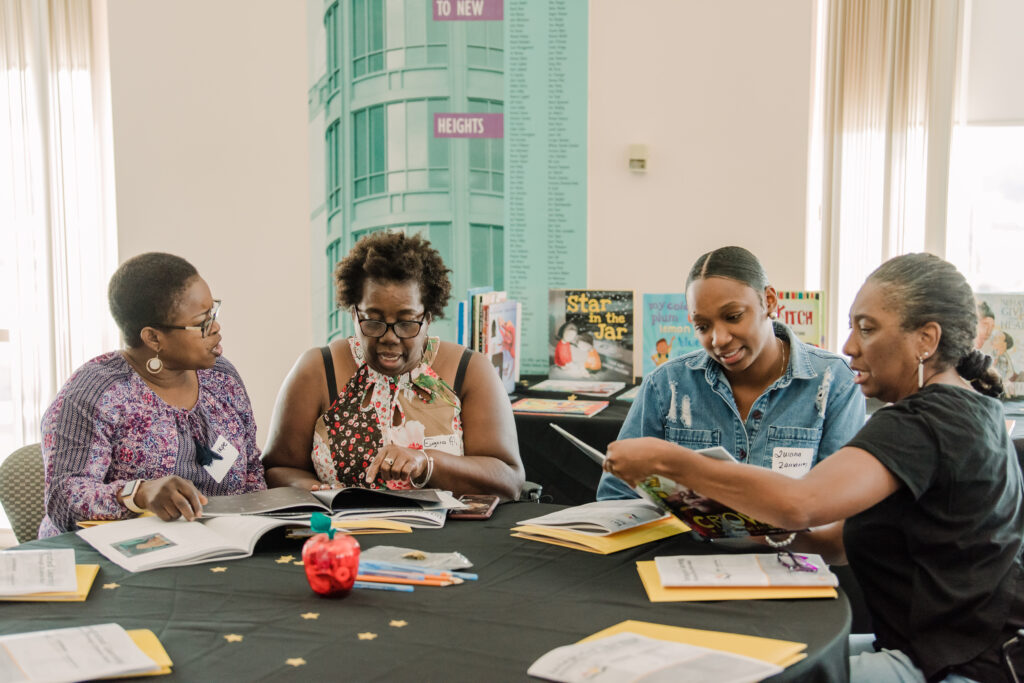
Diverse books
The institute also focused on how teachers can use diverse books in the classroom as an effective translanguaging strategy. Each teacher received a copy of Derrick Barnes’ The King of Kindergarten and Crown:Ode to the Fresh Cut. Mavis Sanders, director of the Sherman Center, invited Barnes as the keynote speaker to share his path as an award-winning author of children’s literature and perspectives on the importance of culturally diverse books in early childhood classrooms.
Barnes described his core motivations for writing books that place the experiences of young black families front and center. “I set out to write the blackest children’s books I could write to show the diversity within black culture and simply because there are so few that show that strength,” he said. “Teachers need more books that reflect not only their students’ cultural and social experiences, but also their language.”
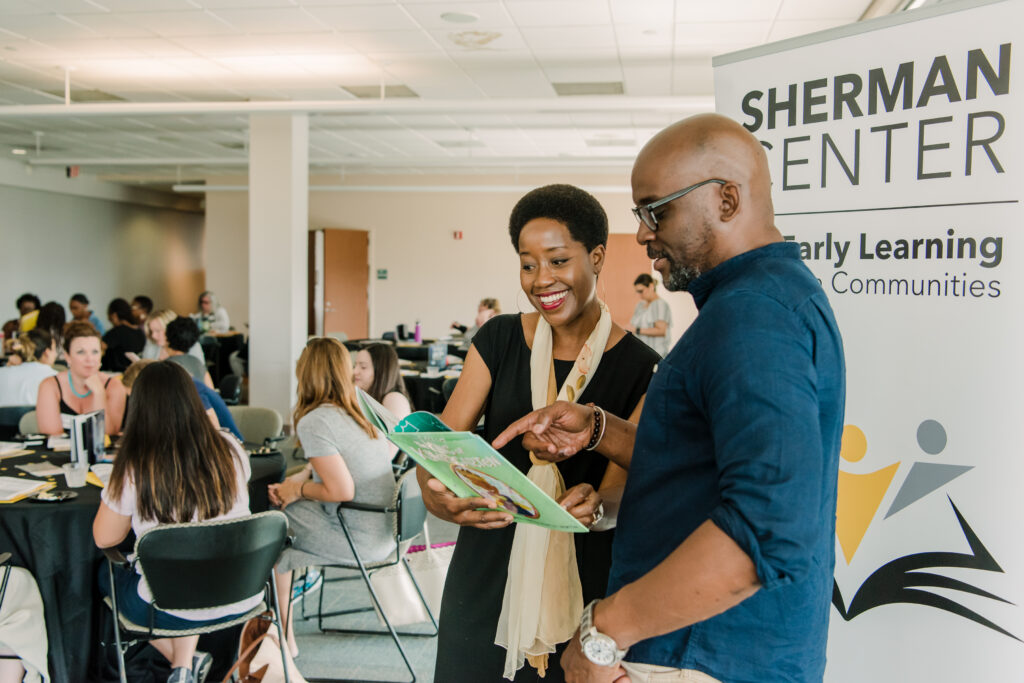
Patricia Escafer has been teaching since 1997 and is currently teaching second grade at Lakeland Elementary/Middle School. She finds translanguaging training through the use of diverse books has been pivotal for her and her students.
“This training is about representing the whole child. It gives me and the children hope because it shows how they can also be heroes and that they matter,” says Escarfuller. “Through diverse books students can reflect on their talents and know that those career choices are an option for them. Learning through diverse books is about respecting all of who a child is, socially and academically.”
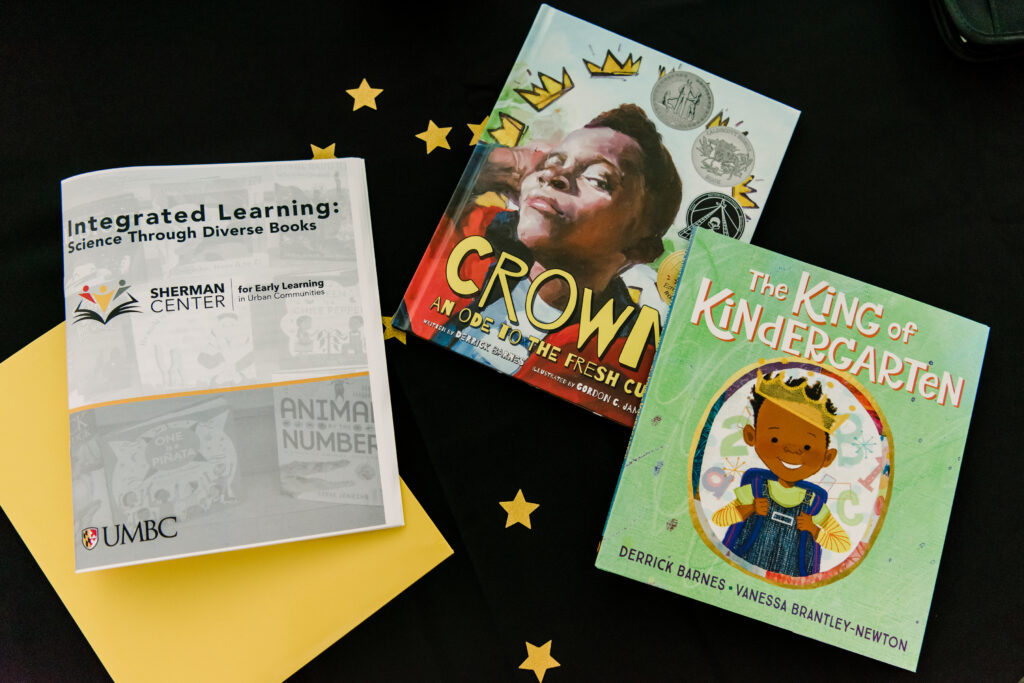
Reading together
Kindel Nash, associate professor of early childhood education, and doctoral student Josh Michael ’10, political science and education, assistant director of UMBC’s Sherman STEM Teachers Scholars Program, also presented their Read Two Impress Plus research, funded by the Sherman Center.
Nash discusses this new research in the article, “Parents can help kids catch up in reading with a 10-minute daily routine,” published in The Conversation. “By activating the senses of hearing, seeing and touch, this approach makes recognizing familiar words easier and faster, increasing fluency,” explains Nash. “The strategy works best when it’s repeated regularly – ideally 10-15 minutes per day.”
Nash points out that this approach is enhanced by involving family members. Further, she writes, “We also found that when families read books that reflected their culture and language, they enjoyed reading together more.”
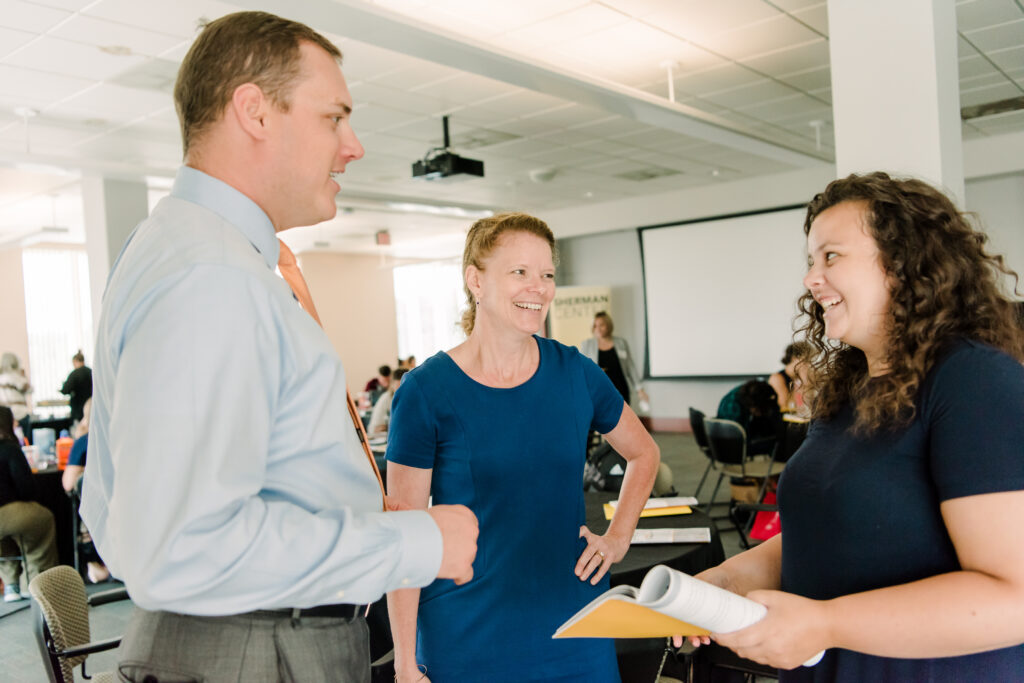
Skill integration
Teachers walked away from the conversations on translanguaging, literacy, and diverse books with strategies to help their students access content knowledge at a higher level. Olivia Grimes ‘19, individualized study, also demonstrated how the educators could apply their new strategies to teaching specific topics in a science classroom.
Grimes, a current first year early childhood teacher at Maree G. Farring Elementary/Middle School, presented each teacher with a copy of Integrated Learning: Science Through Diverse Books, a lesson guide she created. The guide is based on her research as a Sherman STEM Scholar and program assistant at the Sherman Center for Early Learning in Urban Communities. The center funded and provided support for the research, development, creation, and dissemination of the guide. It provides lesson plans and learning activities based on 13 books covering ecology, space, engineering and design, the senses, and weather from the Sherman Center’s Diverse Books Collection.
This type of applied, research-based resource is the reason teachers value this professional development event and want to return for future trainings.
“Integrating science into our lessons, along with diverse texts, exposes students to science content beyond state-tested subjects. The books help reflect the diversity of the science field and allow students to see themselves as scientists, making science personal,” explains Grimes. “These strategies support and build on the skills students have and open worlds of unexplored possibilities.”
Banner image: Zamarron with colleague reviewing Crown: An Ode to the Fresh Cut. All images by Marlayna Demond ’11 for UMBC.
Tags: CAHSS, ShermanScholars

